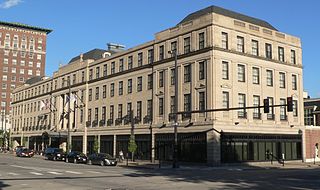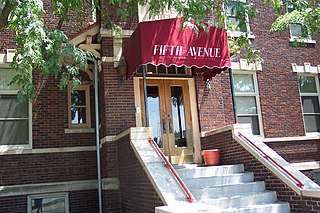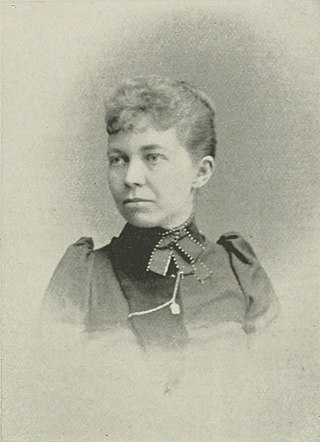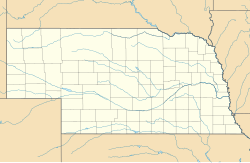
Columbus is a city in and the county seat of Platte County, in the state of Nebraska in the Midwestern United States. The population was 24,028 at the 2020 census, making it the 10th most populous city in Nebraska.

Buildings, sites, districts, and objects in Virginia listed on the National Register of Historic Places:

More than 1,100 properties and districts in Nebraska are on the National Register of Historic Places. Of these, 20 are National Historic Landmarks. There are listings in 90 of the state's 93 counties.
The Nebraska Department of Transportation (NDOT) is the state government agency charged with building and maintaining the state highways in the U.S. state of Nebraska, as well as the state's airports. The main headquarters of the agency is located in Lincoln, the capital city. There are currently eight NDOT district offices located across the state.

The Jewell Building is a city landmark in North Omaha, Nebraska. Built in 1923, it is listed on the National Register of Historic Places. Located at 2221 North 24th Street, the building was home to the Dreamland Ballroom for more than 40 years, and featured performances by many touring jazz and blues legends, including Duke Ellington, Count Basie, Louis Armstrong, Dizzy Gillespie, and Lionel Hampton.

Strehlow Terrace, also called the Terrace Garden Apartment Complex and Ernie Chambers Court, is located at 2024 and 2107 North Sixteenth Street in the Near North Side neighborhood of North Omaha, Nebraska. Designed by Robert Strehlow and reputed local architect Frederick Henninger, Strehlow was added to the National Register of Historic Places in 1986.

The Prague Hotel is located at 1402 South 13th Street on the southwest corner of South 13th and William Streets in the heart of the Little Bohemia neighborhood of Omaha, Nebraska. Designed by Joseph Guth and built−in 1898, this building was listed on the National Register of Historic Places in 1987.

Vinton School was built as a fourteen-room elementary school in 1908 at 2120 Deer Park Boulevard in the Deer Park neighborhood of Omaha, Nebraska, United States. Designed by Omaha architect Frederick W. Clarke, Vinton School is the earliest and most elaborate example of a Tudor Revival-style school in Omaha. Designated an Omaha Landmark in June 1990, the building was listed on the National Register of Historic Places in November 1989.

The Magnolia Omaha Hotel was originally constructed as the Aquila Court Building, and is located at 1615 Howard Street in downtown Omaha, Nebraska. Built in 1923, it was listed on the National Register of Historic Places in 1974.

The Ford Hospital, also called the Fifth Avenue Hotel, is located in downtown Omaha, Nebraska. Built in 1916 by Home Builders Incorporated, the hospital was a privately operated facility built and operated by Dr. Michael J. Ford. Operating until 1922, it was the last small, private hospital in the city. Originally designed by James T. Allan, the building stylistically is a unique blend of elements from the Second Renaissance Revival and the Arts and Crafts movements. The building was sold and remodeled as the Fifth Avenue Hotel in 1929, a name referring to the nickname Douglas Street obtained after the installation of new electric lights in 1927. The building was again converted in 1987, and currently serves as apartments.

The Sherman County Courthouse, at 630 O St. in Loup City, Nebraska, is a historic Beaux Arts-style county courthouse that was built in 1920. Serving Sherman County still, it is a 60-by-74-foot building, topped by a cornice, and above that, mutules and a parapet.

The German American Heritage Center, also known as the Germania-Miller/Standard Hotel, is a cultural center and museum in Davenport, Iowa, United States, that chronicles and preserves the history of German-Americans in the Midwest region. The building was listed on the National Register of Historic Places in 1983.

The Twin Bridge near Brownlee, Nebraska is a steel stringer bridge with a timber roadbed that was built in 1900 by the Wrought Iron Bridge Co. of Canton, Ohio. Also known as the North Loup River Bridge and denoted as NEHBS No. CE00-223, it was listed on the National Register of Historic Places in 1992.

The Wheat Growers Hotel, at 102 S. Oak St. in Kimball, Nebraska, is a historic hotel that was built in Early Commercial style in 1918. It was the largest hotel built in Kimball. It benefited from Union Pacific railway line expansion and the Lincoln Highway running through Kimball.

Assumption Catholic Church is a parish of the Roman Catholic Church in Dwight, Nebraska, within the David City deanery of the Diocese of Lincoln. It is noted for the Late Gothic Revival architecture of its 1914 parish church and related buildings on its campus located at 336 W. Pine St. The complex was listed on the National Register of Historic Places in 2008 as St. Mary of the Assumption Catholic Church, School and Grottoes, denoted as BU06-001. The listing includes four contributing buildings and three contributing objects.
Fiske & Meginnis, Architects was an architecture firm partnership from 1915–1924 between Ferdinand C. Fiske (1856–1930) and Harry Meginnis in Lincoln, Nebraska. Twelve of the buildings they designed are listed on the National Register of Historic Places (NRHP). The two men have additional buildings listed on the National Register with other partnerships or individually credited. Related firms were Fiske and Dieman, Fiske, Meginnis and Schaumberg, and Meginnis and Schaumberg.

The Scotia Chalk Building, located off Nebraska Highway 22 in Scotia in Greeley County, Nebraska, was built in 1887. Also known as the Ed Wright Building, it was listed on the National Register of Historic Places in 1979.

The Loup City Township Carnegie Library is a historic building in Loup City, Nebraska. It was built as a Carnegie library in 1917 by John Ohlson & Sons after members of the community applied for a grant from the Carnegie Corporation. The cornerstone was laid by the Grand Lodge of Nebraska in January 1917, and the library was dedicated on September 3, 1917. The building was designed in the Classical Revival style by Fiske & Meginnis. It has been listed on the National Register of Historic Places since December 27, 2007.

The Harder Hotel is a historic hotel building in Scribner, Nebraska. It was built in 1901 by Fritz Stabenow for Hans Harder, a German immigrant from Schleswig-Holstein who first worked as a stonemason in Chicago before moving to Nebraska. The building was designed in the Rundbogenstil style by architect Frederick A. Henninger. It has been listed on the National Register of Historic Places since November 27, 1989.

Alice Capitola Willard was an American journalist and businesswoman. She served as editor of the Times, manager of the Woman's Signal (London), and managing editor of Woman's Signal Budget (London).




















